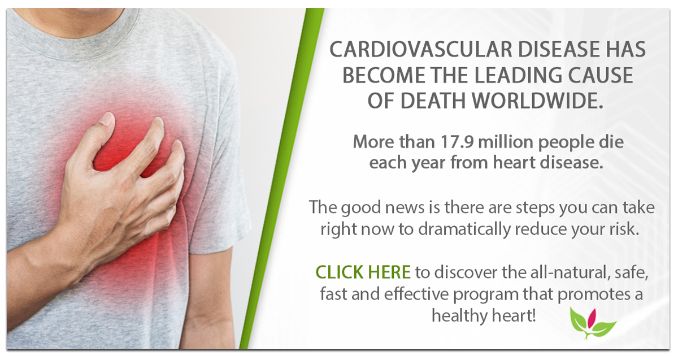Disclaimer: This cardiovascular age information provided in this article is intended to offer general knowledge about cardiovascular health and the significance of understanding your heart's condition. However, it is essential to emphasize that individual health circumstances vary, and the guidance provided here should not replace professional medical advice. Seeking guidance from certified healthcare experts is advised for addressing any particular concerns or inquiries regarding your cardiac well-being.
When we say “cardiovascular,” we're talking about the heart and all those blood vessels that make up our body's superhighway.
They're responsible for keeping blood and oxygen flowing smoothly to every nook and cranny, ensuring all our organs and tissues are well-fed and happy.
Keeping the cardiovascular system in tip-top shape is important for staying healthy overall.
When the heart is strong and the blood vessels work hard, it helps prevent nasty cardiovascular diseases.
Common Cardiovascular Diseases And Conditions
Several heart diseases and conditions can affect the cardiovascular system, leading to various symptoms and complications.
Here are some common heart diseases and conditions:
1. Coronary Artery Disease (CAD)
CAD is the most common heart disease.
According to NHLBI, coronary heart disease [¹] remains one of the leading causes of death in the United States. Moreover, this happens when plaque narrows or obstructs the coronary arteries, diminishing blood flow to the heart muscle.
2. Myocardial Infarction (Heart Attack)
A heart-related incident occurs when a portion of the heart muscle is restricted from receiving blood flow, often as a result of a blood clot. Therefore, this can damage or kill the affected heart tissue. Moreover, cleveland Clinic revealed that over 1 million folks in the United States die from a heart attack [²] due to a condition known as myocardial ischemia every year.
3. Congestive Heart Failure
Congestive Heart failure occurs when the heart cannot pump blood effectively, leading to insufficient oxygen and nutrients delivered to the body's tissues. Moreover, it can result from conditions like CAD, hypertension, or myocardial infarction.
The Centers for Disease Control and Prevention report that roughly 6.2 million adults in the United States are dealing with heart failure [³]. Therefore, in 2018 alone, heart failure made its mark on 379,800 death certificates, accounting for 13.4% of them.
4. Atrial Fibrillation
A condition called atrial fibrillation, commonly referred to as A-fib or AF, impacts over 2 million American adults [¹³], representing one of the prevalent forms of irregular heart rhythms, or arrhythmias.
Furthermore, atrial fibrillation disturbs the normal rhythm of your heart, leading to occasional episodes of rapid heartbeat. Moreover, it results in a lack of synchronization between the upper and lower chambers of your heart, leading to insufficient blood circulation to both your lungs and body.
5. Hypertension (High Blood Pressure)
Elevated blood pressure necessitates the heart to exert more effort in circulating blood, thereby placing additional stress on both the heart and blood vessels. Over time, hypertension can contribute to conditions such as CAD and heart failure.
As mentioned by the CDC [⁴], back in 2017, the American College of Cardiology and the American Heart Association shook things up by dropping some new guidelines for managing hypertension. Furthermore, they set the bar for high blood pressure at 130/80 mmHg or above. And then, if your numbers hit 140/90 mmHg or higher, that's classified as stage 2 hypertension.
As per the same source, elevated blood pressure was identified as either a primary or contributing element in 691,095 deaths in the United States in 2021.
6. Valvular Heart Disease
Valvular heart disease involves damage or defects in one or more of the heart's valves. Common valve conditions include leaky heart valve aortic stenosis, mitral regurgitation, and prolapse.
Statistics say that around 2.5% of folks in the U.S. have valvular heart disease [⁵], with older adults being more prone to it. Shockingly, nearly 25,000 deaths each year in the U.S. are linked to heart valve disease, aside from cases caused by rheumatic disease.
7. Atrial Septal Defect
An atrial septal defect (ASD) is a heart condition present at birth, making it a congenital defect. Individuals with ASD have a hole between the heart's upper chambers, which increases the flow of blood through the lungs. Moreover, a study conducted in Atlanta by the CDC found that around 5,240 babies are born each year in the United States with this condition.
In simpler terms, about 1 in every 769 babies born in the United States annually are diagnosed with an atrial septal defect. Several risk factors contribute to the development of common heart diseases and conditions. Furthermore, recognizing these risk factors is essential for implementing preventative measures and intervening early.
Key Risk Factors
Here are some common risk factors associated with heart disease:
-
Age
The risk of heart disease increases with age [⁶]. The aging process can result in alterations to both the structure and operation of the heart and blood vessels.
-
Family History
Individuals with a family history of heart disease have a higher risk [⁷]. Genetic factors can influence susceptibility to conditions like coronary artery disease and hypertension.
-
Gender
Studies proved that men generally face a higher risk of heart disease than women. Heart disease is the primary cause of death among men [⁹] in the United States, claiming the lives of 384,886 men in 2021, constituting approximately one-quarter of all male deaths.
In the same year, it was accountable for the deaths of 310,661 women [⁸], representing about one-fifth of all female deaths.

-
High Blood Pressure (Hypertension)
Hypertension or high blood pressure emerges as a notable risk element for heart disease, encompassing coronary heart disease. This condition makes the heart work more strenuously, creating extra pressure on the arteries and the heart muscle.
-
High Cholesterol Levels
Elevated levels of LDL (“bad”) cholesterol and low levels of HDL (“good”) cholesterol [¹⁰] can contribute to the buildup of plaque in the arteries, heightening the likelihood of developing atherosclerosis and coronary heart disease. This buildup narrows the arteries and raises the risk of a heart attack or stroke.
-
Diabetes
Individuals with diabetes are at an increased risk of heart disease [¹¹] Smoking increases the risk of heart disease by 2 to 4 times. Diabetes can lead to high blood sugar levels, which may damage vessels and contribute to atherosclerosis.
-
Tobacco Use
Smoking increases the risk of heart disease by 2 to 4 times [¹²]. Nicotine and other chemicals in tobacco can damage vessels and contribute to atherosclerosis.

-
Sedentary Lifestyle
Not getting enough physical activity can lead to heart disease.
As mentioned by the CDC, one study showed that adults who watch more than 4 hours of television a day had an 80% higher risk of death from cardiovascular disease.
-
Obesity
Obesity refers to having an excess of body fat [¹⁵]. It's associated with elevated “bad” cholesterol and triglycerides, while “good” cholesterol levels tend to be lower.
Obesity can also contribute to conditions like high blood pressure, diabetes, and heart disease.
-
Poor Diet
A diet abundant in saturated fats, trans fats, and cholesterol has been associated with heart disease and associated conditions like atherosclerosis.
Additionally, too much sodium intake can elevate blood pressure [¹⁴] and augment the likelihood of heart disease and stroke.
-
Stress
Emotional or mental stress [¹⁶] induces physiological alterations throughout the body, including the heart.
Approximately one out of every six individuals with heart disease encounters reduced blood flow to the heart (ischemia) during periods of mental stress.

“Stress does cause some people to act in ways that increase their risk for heart disease,” says Dr. Bhatt
Remember: It is essential to seek guidance from a healthcare provider for individualized advice. They can provide guidance on how to manage these risk factors effectively.
Cardiovascular Age Vs Chronological Age
What's the distinction between chronological age and cardiovascular age? Chronological age is simply the number of years a person has been alive, whereas cardiovascular age reflects the health condition of the cardiovascular system.
Unlike your chronological age, your heart's age signifies more than just a numerical value. It serves as a crucial gauge of your overall cardiovascular well-being. Ideally, your heart's age should match or be younger than your actual age, indicating a reduced risk of heart disease.
For instance, consider a 50-year-old individual with a sedentary lifestyle, high blood pressure, and a smoking habit. This person might have a cardiovascular age closer to a 60-year-old, even though their chronological age is 50.
Conversely, a 40-year-old who exercises regularly maintains a balanced diet, and keeps a healthy weight might have a cardiovascular age closer to that of a 30-year-old, even though their chronological age is 40.
Lifestyle factors are important in influencing cardiovascular age and highlight the potential for positive changes to enhance heart health, irrespective of chronological age. The heart, which pumps blood, is central to this understanding, as it plays a vital role in the health of the cardiovascular system.
Understanding Cardiovascular Age

What Is Cardiovascular Age?
Cardiovascular age is a measure that compares the health of your cardiovascular system to that of an average individual of a specific age. It provides insight into the state of your heart and blood vessels, giving you an indication of whether your cardiovascular health is better or worse than expected for your chronological age.
For example, if you are 40 years old but have a cardiovascular age of 35, it means your heart and blood vessels are in better shape than the average 40-year-old. On the other hand, if your cardiovascular age is 45, it suggests that your H is not optimal for your age group.
Importance of Knowing Your Cardiovascular Age
Knowing your cardiovascular age is essential for several reasons:
- Provides a tangible measure of your heart's condition. It might motivate you to start healthy habits like regular exercise, eating well, and finding ways to relax.
- Knowing your cardiovascular age can motivate you to make positive lifestyle changes. If you find that your cardiovascular age is higher than your chronological age, it can serve as a wake-up call to prioritize your heart health. It can inspire you to adopt healthier habits, like exercising regularly, eating a balanced diet, and managing stress. By making these changes, you can potentially reverse the effects of aging on your cardiovascular system and improve your overall well-being.
- Knowing your cardiovascular age can help you track your progress over time. By regularly reassessing your cardiovascular age, you can monitor the impact of your lifestyle choices and interventions on your heart health. This feedback can provide a sense of accomplishment and reinforce your commitment to maintaining a youthful cardiovascular age. You might be wondering how to calculate your chronological age right now. Worry not—we've got you covered!
Calculating Your Cardiovascular Age
Now that you understand the factors influencing cardiovascular age, let's explore how to calculate it. To calculate your cardiovascular age, several resources and online tools are available. These tools often require you to input your biometric measurements, exercise habits, and lifestyle choices to estimate your cardiovascular age.
Here are a few resources to consider:
1. American Heart Association (AHA) Cardiovascular Risk Calculator
The AHA offers an online calculator that estimates your 10-year risk of developing cardiovascular disease and assesses your cardiovascular age.
2. Framingham Heart Study Cardiovascular Disease Risk Calculator.
The Framingham Heart Study provides an online tool that estimates your 10-year risk of developing cardiovascular disease based on factors such as age, sex, blood pressure, cholesterol levels, and smoking status.
3. Heart Age Calculator
The Heart Age Calculator, developed by the National Health Service (NHS) in the United Kingdom, estimates your cardiovascular age based on factors such as age, sex, blood pressure, cholesterol levels, body mass index (BMI), smoking status, and exercise habits.
However, it's important to remember that they are estimations and should not replace a comprehensive evaluation by a healthcare professional.
Role Of Diet And Nutrition For A Healthy Heart
Maintaining a healthy heart involves making smart choices about your diet and nutrition.
Here are some key guidelines for promoting heart health through what you eat:
-
Choose Heart-Healthy Fats
Choose foods with unsaturated fats like olive oil, avocados, and nuts. These fats not only make your meals tastier but also help your heart by improving cholesterol levels. Incorporate them into your cooking and salads for a tasty and heart-friendly boost.
-
Limit Saturated And Trans Fats
Don't consume too much saturated fats, which are often in red meat and full-fat dairy products. Also, steer clear of trans fats present in many processed and fried foods. These harmful fats can elevate levels of bad cholesterol and boost the chances of heart disease. Instead, focus on healthier fat choices to safeguard your heart.

-
Prioritize Omega-3 Fatty Acids
Add more omega-3 fatty acids to your meals, such as salmon and trout, flaxseeds, chia seeds, and walnuts. These important fats have anti-inflammatory effects and can help improve cholesterol levels, making your heart healthier.
-
Eat More Fruits And Vegetables
Vibrant fruits and vegetables can support heart health. These contain vitamins, minerals, and antioxidants. You may include a variety in your meals, such as leafy greens, berries, citrus fruits, and cruciferous vegetables. These foods not only support your heart but also contribute to your overall health.
-
Include Whole Grains
Choose whole grains like brown rice, quinoa, whole wheat bread, and oats. These grains provide essential fiber, vitamins, and minerals that contribute to heart health. Make whole grains a staple in your diet, choosing them over refined grains to maximize their nutritional benefits.
-
Moderate Protein Intake
Add lean protein sources such as chicken, fish, beans, and legumes to your meals. These protein-packed foods help maintain muscle health without the saturated fat found in some red meats. Explore different protein sources and cooking techniques to keep your meals exciting and beneficial for your heart.
-
Reduce Salt Intake
Lower your sodium intake by minimizing the use of table salt and being mindful of high-sodium processed foods.
Doing this can help manage high blood pressure. Too much salt can increase your blood pressure, which increases the risk of heart disease. Use herbs, spices, and other seasonings to add flavor to your meals instead of using too much salt.

-
Watch Portion Sizes
To avoid overeating, pay attention to portion sizes. Eating smaller, balanced meals throughout can contribute to keeping a healthy weight and supporting heart health. Listen to your body's hunger and fullness cues, and savor each bite to fully enjoy and appreciate your meals.
-
Limit Added Sugars
Reduce your consumption of foods and drinks with added sugars, like sugary beverages, candies, and desserts. Excessive sugar can lead you to weight gain and increase the risk of heart disease. Choose natural sources of sweetness, like fruits, when satisfying your sweet cravings, and read food labels to identify hidden sugars in processed foods.
-
Stay Hydrated With Water
Choose water as your main drink. Restrict the intake of sugary and highly caffeinated beverages. It's important to stay hydrated. This helps with your overall health and various bodily functions, including heart health. Keep a refillable water bottle with you to promote regular hydration throughout the day.
Remember, adopting a heart-healthy diet is a positive step toward cardiovascular well-being. Combine these dietary choices with regular physical activity for a holistic approach to caring for your heart.

Exercise And Physical Activity Recommendations
Aside from a healthy diet, regular exercise and physical activity are important for nurturing overall health and well-being.
Here are some recommendations to guide you in incorporating exercise into your routine:
1. Aerobic Exercise
Strive for a minimum of 150 minutes of moderate-intensity aerobic exercise or 75 minutes of vigorous-intensity aerobic exercise each week. Moderate activities like brisk walking, cycling, or swimming are suitable examples. Running or high-intensity interval training (HIIT) are examples of vigorous activities. Distribute these sessions across the week to maximize their advantages.

2. Strength Training
Incorporate strength training workouts into your routine on at least two days per week. Concentrate on key muscle groups such as legs, hips, back, abdomen, chest, shoulders, and arms. Resistance training can utilize weights, resistance bands, or bodyweight exercises such as squats, lunges, and push-ups.
3. Flexibility And Stretching
Incorporate flexibility exercises to enhance joint mobility and prevent injury. Stretch major muscle groups at least two days a week. Yoga or Pilates are excellent options that combine strength, flexibility, and balance training.

4. Balance Exercises
Include activities that enhance balance, especially if you're older or at risk of falling. Balance exercises, such as standing on one leg or specific yoga poses, can help improve stability and prevent falls.
5. Everyday Physical Activity
Include physical activity in your daily routine besides planned exercise sessions. Take the stairs instead of the elevator, walk or bike for short errands, and engage in household chores. Even small increments of physical activity contribute to overall health.

6. Consistency Is Key
Aim for regularity in your exercise routine. Consistency is more important than intensity. Find activities you enjoy to make exercise a sustainable and enjoyable part of your lifestyle.
7. Listen To Your Body
Pay attention to how your body responds to exercise. If you experience pain, shortness of breath, or discomfort, modify or stop the activity and consult a healthcare professional if necessary.
8. Gradual Progression
If you're new to exercise or returning after a break, start slowly and gradually increase intensity and duration. This approach helps prevent injury and allows your body to adapt to exercise demands.

9. Mix It Up
Keep your routine interesting by incorporating a variety of exercises. This not only prevents boredom but also ensures that different muscle groups are engaged. Consider trying new activities like dance, swimming, or group fitness classes.
Tips For Maintaining A Youthful Cardiovascular Age
Now that you have calculated your cardiovascular age, you may be wondering how to improve it or maintain a youthful cardiovascular age.
Here are some tips to help you on your journey:
-
Quit Smoking
If you smoke, quitting is one of the best things you can do for your cardiovascular health. Seek support from healthcare professionals or join smoking cessation programs to increase your chances of success.

-
Manage Stress
Find healthy ways to manage stress, such as practicing relaxation techniques, deep breathing exercises, or engaging in activities you enjoy. Incorporate stress-reducing activities into your daily routine to maintain a youthful cardiovascular age.
-
Maintain A Healthy Weight
Aim for a healthy body weight by adopting a balanced diet and engaging in regular physical activity. Excess weight can strain the heart and increase the risk of cardiovascular diseases.

-
Monitor Your Biometric Measurements
Regularly check and monitor your blood pressure, cholesterol levels, and body mass index (BMI). Keeping these measurements within the healthy range can help maintain a youthful cardiovascular age.
Remember, small changes in your lifestyle can significantly impact your heart health. By incorporating these tips into your daily routine, you can take charge of your cardiovascular health and enjoy a healthier, more vibrant life.
Conclusion
Understanding cardiovascular health involves using specialized calculators to assess cardiovascular age based on various health indicators. This metric reveals heart health insights and promotes proactive lifestyle changes. Comparing cardiovascular age to chronological age helps individuals understand heart disease risk and adopt tailored interventions. These interventions may include diet changes, regular exercise, quitting smoking, and stress management. These calculators help identify risks early and develop personalized health strategies. These strategies aim to reduce cardiovascular age and the risk of severe complications.
Discover the path to a healthier heart with our 14-Day Heart Health Quick Start Program.





